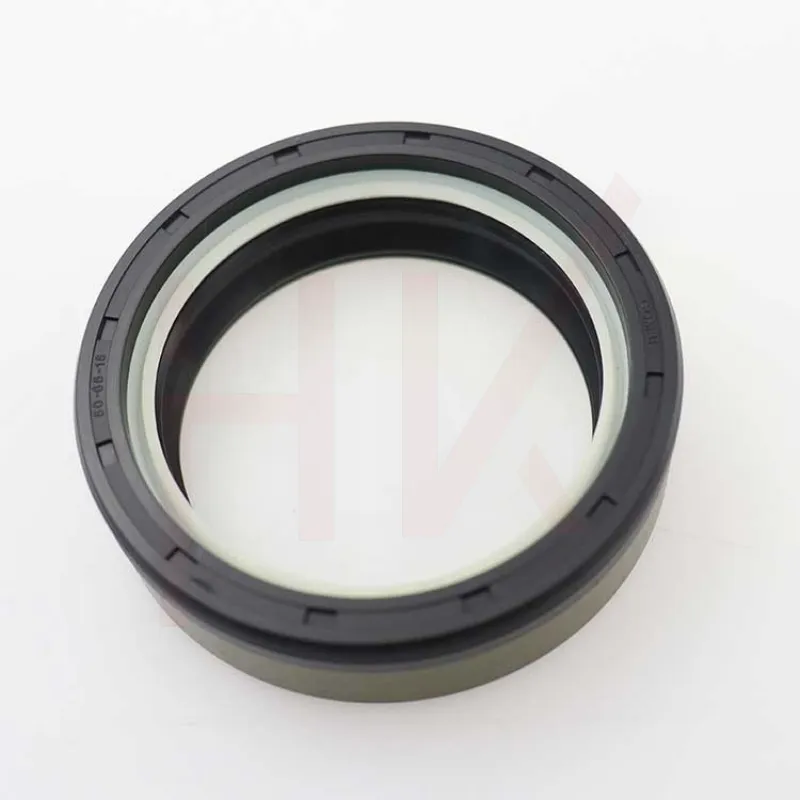Nov . 16, 2024 12:21 Back to list
wiper ring
Understanding Wiper Rings Importance and Function
Wiper rings, often overshadowed in the discussion of mechanical components, play a crucial role in various types of machinery, particularly in hydraulic and pneumatic systems. Despite their seemingly simple design, wiper rings are essential for ensuring the efficiency and longevity of machinery, preventing contamination, and maintaining optimal functioning. This article delves into the functionality, importance, and applications of wiper rings.
What are Wiper Rings?
Wiper rings are sealing components typically made from materials like polyurethane, rubber, or specialized plastics. Their primary function is to prevent contaminants such as dirt, dust, and moisture from entering the internal parts of hydraulic cylinders or pneumatic cylinders. They are usually placed at the outer edge of these cylinders, serving as the first line of defense against external impurities.
Functionality of Wiper Rings
The primary purpose of a wiper ring is to protect the inner components of a cylinder by wiping away contaminants during the movement of the piston or rod. They act like a squeegee, effectively scraping off any foreign particles that may adhere to the surface of the moving elements. This wiping action is crucial in maintaining the integrity of the seals that are responsible for retaining fluids or air pressure within the system.
In hydraulic applications, contamination can lead to significant issues, including wear and tear of components, decreased efficiency, and system failures. By using wiper rings, operators can significantly reduce the risk of such issues by ensuring that the internal environment remains clean.
Importance of Wiper Rings
1. Contamination Prevention The most evident role of wiper rings is to keep contaminants out. In many industrial environments, the presence of dirt and other particles can be unavoidable. Wiper rings provide a barrier that helps in prolonging the life of the hydraulic or pneumatic system.
wiper ring

2. Improved Performance When contaminants are kept at bay, the overall performance of the machinery improves. This leads to better efficiency, lower operational costs, and reduced downtime due to maintenance.
3. Increased Equipment Longevity By preventing wear caused by dirt and debris, wiper rings contribute significantly to the longevity of the machinery. This is particularly important in industries where equipment costs are high, and replacements can be both financially and operationally burdensome.
4. Energy Efficiency In hydraulic systems, fluid leaks due to wear can lead to increased energy consumption. Wiper rings help maintain system integrity by minimizing leaks, thereby enhancing energy efficiency.
Applications of Wiper Rings
Wiper rings find applications across various industries, including
- Automotive In vehicle manufacturing, wiper rings are utilized in the hydraulic systems of brakes and suspensions, where cleanliness is paramount for safety and performance. - Aerospace Given the high standards for reliability and performance, wiper rings are essential in aircraft hydraulics, ensuring systems operate effectively even under extreme conditions. - Heavy Machinery In construction and mining equipment, wiper rings help protect hydraulic systems from environmental contaminants, extending the operational life of expensive machinery.
- Manufacturing In CNC machines and other manufacturing equipment, wiper rings ensure that the precision components remain uncontaminated, promoting accurate and efficient operations.
Conclusion
While wiper rings may seem like minor components in complex machinery, their impact is far-reaching. They play a vital role in maintaining cleanliness and efficiency within hydraulic and pneumatic systems, ultimately contributing to the reliability and longevity of industrial equipment. Understanding their function and importance can help manufacturers and operators appreciate the necessity of maintaining and replacing these components regularly. By investing in high-quality wiper rings, industries can ensure smoother operations and better overall performance, demonstrating that sometimes, the smallest parts can make the biggest difference.
-
The Trans-formative Journey of Wheel Hub Oil Seals
NewsJun.06,2025
-
Graphene-Enhanced Oil Seals: Revolutionizing High-Pressure Oil Sealing
NewsJun.06,2025
-
Future of Hydraulic Sealing: Advanced Intelligent TCN Oil Seals
NewsJun.06,2025
-
Don’t Let a Broken TCV Oil Seal Ruin Your Day
NewsJun.06,2025
-
Bio-Inspired Dust Seals for Better Sealing Performance
NewsJun.06,2025
-
Biodegradable and Sustainable Hydraulic Seal Materials
NewsJun.06,2025
-
Top Oil Seal Solutions for Your Industrial Needs
NewsMay.22,2025
Products categories
















